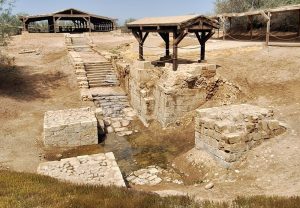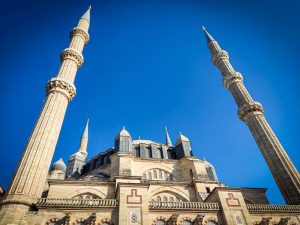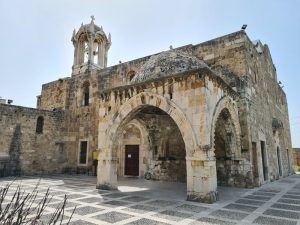White City of Tel-Aviv – the Modern Movement
A huge collection of Modernist buildings (also called Bauhaus) from the 1930s and 40s, designed by architects who fled the Nazis.

A huge collection of Modernist buildings (also called Bauhaus) from the 1930s and 40s, designed by architects who fled the Nazis.

A place of pilgrimage where, in Christian belief, John the Baptist baptised Jesus.

A mountain on whose peak stands the tomb of King Antiochus I, an imposing artistic achievement of the Hellenistic period.

The extensive ruins – palaces, churches, mosques, fortifications, and homes – of an important trading city on the medieval Silk Road, where diverse cultures and architectural traditions met and blended.

An ancient Nabatean town with a number of massive rock-cut tombs from the 1st century AD.

An 8th-century desert castle with unusual Umayyad-period frescoes.

A Greco-Roman spa town and the enormous calcium terraces, waterfalls, basins and pools where it is located.

A medieval caravan stop on the Silk Road that contains many examples of traditional Ottoman architecture.

An ancient and disputed city, holy to three major religions.

A mosque complex representing the height of Ottoman architectural achievement.

Ruins of many layers of civilizations and the birthplace of the Phoenician alphabet.

An astoundingly large and well-preserved Roman temple complex.

A desert landscape known for its beauty as well as its archeological importance.

The ruins of a major trade-route city of the Kingdom of Hormuz.

A massive mud-brick fortress, the capital of the Banu Nebhan and the centre of Ibadism in the Middle Ages.

Remains of an 8th-century Umayyad town that offers insight into Umayyad town planning and architecture.

An ancient port city with ruins from the Greek, Roman and early Christian periods.

A 2000-year-old Nabatean archeological site with hundreds of tombs and temples carved from sandstone cliffs.

Magnificent temples demonstrating the power of Ancient Egyptian civilization.

An ancient walled city where Ottoman structures were built on top of a Crusader-era fortress.

Four Indian Ocean islands with extraordinary biodiversity and distinct endemic species.

A 2000-year-old desert palace complex with a dramatic story of Jewish resistance against Roman rule.

Ruins of what was a magnificent palace complex over 2000 years ago, capital of the Achaemenid Empire.

A collection of 9 archeological sites covering several historical periods of an important city’s grand monuments.

Excavation of the ancient Greek city of Troy, site of the Trojan War.

A collection of more than 800(!) structures – a fortress, religious sites, houses, cemeteries and many more – dating from about 100 AD until the 18th century.

Extensive temples and tombs that illuminate the history of ancient Egyptian civilization in architecture, art and text.

Evidence of a prehistoric transition from nomadic to sedentary societies around oases.